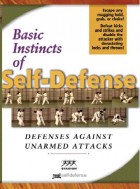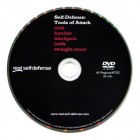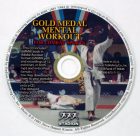Good technique, poor tactics
In tight quarters, a small guy, with good boxing technique, rushes into a close distance with a bigger guy, a wrestler. Result: The boxer is finished in one move.
Lessons on self-defense tactics
1. Don’t fight in a place that restricts your strongest tactical options — leave, run if you have to, to a place that suits your tactical skills. Also see Self-Defense Tip #49 — Before you say a word.
2. Don’t enter your opponent’s preferred fighting range when he still can control his actions. That’s a bad tactic. First make him lose control of his actions.
Now, that you have viewed the video and read the above lessons, do you get the point of the answer top coaches gave to the question in Self-Defense Tip #124?
BTW: To know what to do in a clinch to keep yourself from being suplexed, see Self-Defense Tip #118 — Clinch
Recommended reading:
Self-Defense Tip #30 — Effectiveness of Various Combat Sports and Martial Arts
Attention:
Applying any of the techniques mentioned above is your sole responsibility.
Neither Never-Thought-of-It LLC nor the author of this self-defense tip, nor persons pictured in this self-defense tip, make any representation, warranty, or guarantee that the techniques described or shown in this tip will be safe, effective, or legal in any self-defense situation or otherwise.
The reader or viewer assumes all risks and hazards of injury or death to herself, himself, or others, as well as any resultant liability for the use of the techniques and methods contained in this self-defense tip.
Specific self-defense responses demonstrated or described in this self-defense tip may not be justified in certain situations in light of all the circumstances or under the applicable federal, state, or local law. Neither Never-Thought-of-It LLC nor the author of this self-defense tip makes any representation or warranty regarding the legality or appropriateness of any techniques described or demonstrated in this self-defense tip.
Self-defense tip from Thomas Kurz, co-author of Basic Instincts of Self-Defense and author of Science of Sports Training, Stretching Scientifically, and Flexibility Express.
Self-Defense Moves
For your defense moves to work under stress they must be based on your natural, instinctive reactions, require little strength and limited range of motion, and be proven in fighting experience.To learn how your natural reactions can instantly defeat any unarmed attack, see the video Basic Instincts of Self-Defense.
Defend Against Weapons
To defend against weapons you have to know how they are used. Also — every stick has two ends … the weapon of attack may become a weapon of defense in your hand …To learn how the typical street weapons (club, knife, razor) are used by an experienced streetfighter and how to practice with them, see the video Self-Defense: Tools of Attack — Club, Hatchet, Blackjack, Knife, Straight Razor.
Mental Toughness
Staying cool under pressure is more important for self-defense than being physically fit and technically skilled. If you can’t control your mind what can you control?To learn mental techniques that let you calmly face any threat and act rationally in the heat of a fight, click here.
For a complete list of our products, click here.








So a boxer lost to a wrestler. I don’t want to join a wrestling gym. I want to learn stuff useful for self-defense.
So you didn’t get the tactical principle from watching the fight on the video. To make it worse, you didn’t read on to the two lessons.
The fight seemed to be a mutual combat situation, not a self defense one; it appears that the two fought by choice.
The environment was a hostile one for both fighters; nothing but metal and ceramic surfaces. Any fall caused by a punch or takedown could have resulted in serious injury or even death.
The boxer seemed to be more of a sport fighter because he did not use any “dirty” techniques. The wrestler seemed more of a street fighter because he knew that if he slammed the boxer on the hard bathroom floor the fight would most likely be over.
I think the two fight lessons make sense. Try to avoid fighting in dangerous environments. If it is unavoidable, then use the environment to one’s advantage, as the wrestler did.
Stay out of the opponent’s reach in order to avoid being taken down or getting locked up. Try to get the opponent unbalanced and off his feet before he does the same to you.
In the end, no strategy ever guarantees victory in a fight. The boxer could have knocked the wrestler out if he had connected with his jaw, or the wrestler could have won as he did.
The best outcome would have been for both participants to walk away and not fight. I hope the boxer was not seriously injured; those public restroom floors are rock solid. .
Thank you for the video and the tips; there were valuable lessons in both.
Its good to be well rounded, but the ground is a dangerous place even if there is only 1 opponent which can change on the street.
Aren’t you beside the point?
The boxer just goes for a showoff. Making nice looking strokes to fright, but not effective, not even trying to go for the upper body.
When I was learning Wing Tsun, One of the worst possible opponents was considered a wrestler. Because these can take high damage while going full speed towards shortening the distance with you to zero. Then, if they get you to a ground battle, they rule. So The technique was keeping the distance and if he goes in for a catch finish him lethal (not just a few nice looking punches) before he get’s to you.
Also, Toilet is a closed place. Very complicated to move. Walls and other hard obstacles. You might as well get yourself severely hit by an object standing on the way. So your move must be fast and precise, or otherwise, get out first, then continue the fight.
Japanese Samurai has 3 steel weapons. Katana is a great sword, but you only use it in the open. If you use it in a building, the sword might hit a wall/ceiling or other obstacle. So they use a smaller sword, a Wakizashi. The third one is Tanto for stabbing.